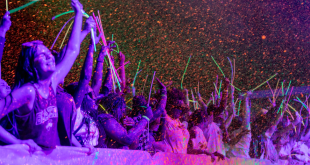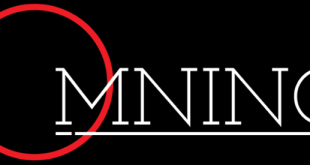Spoiler alert: The Maya doomsday prophecy is just a myth, according to the panel discussion Tuesday.
The Arts and Sciences Lectures Series invited the VSU community to a panel discussion titled “Debunking the Maya Myth: Reassessing the Doomsday Prophecy, 12/21/2012.”
The Bailey Science Center Auditorium was packed with students, faculty and staff as the panel of six professors discussed the impending apocalyptic theory sparked in pop culture at the turn of last year.
The panel included Dr. Iwan Elstak and Dr. Arsalan Wares of the Mathematics department, Dr. Owen Jones of the History department, Dr. Lavonna Loverne of the Philosophy department and Dr. John Woodruff of the Modern and Classical Languages (MCL) department. Dr. Amy Aronson from MCL introduced the guests and led the panel in the discussion.
Each professor explored how the prophecy was merely a myth and how the Maya culture has been misrepresented.
Dr. Wares was first and discussed how to read the Maya numeral system.
Instead of the Western base-10 system—meaning, we use 10 unique characters to symbolize each number—the Mayas used a base-20 system.
Using a series of lines and dots to symbolize each numeral, the Mayas created a system of grouping and counting not unlike Western mathematics.
“The Mayas developed the concept of zero,” Dr. Wares said.
Dr. Loverne later built on that idea, with her discussion of the religion and culture of the Maya.
“We think of it as just, you know, zero,” Dr. Loverne said. “That’s what it is, it’s just there […] and it’s all just mathematical and great. Consider the fact that zero represents an interesting religious ideology which contains both beginnings and endings.”
To the Maya, everything is a repeating cycle—every ending must have a new beginning follow it.
Dr. Elstak discussed the Maya calendar—a complex system of several cycles.
The actual act of recording a date required a sequence of five numbers that listed the day of each cycle and each deity represented by their cycles.
“The system starts over and keeps on going for an infinite amount of time,” Dr. Jones said. “So, when we think the calendar is going to end on Dec. 21 or Dec. 23 of 2012, it’s really just the end. Ouch.”
Dr. Jones broke down the historical context of most of the calendar and the Maya culture, and even displayed a picture of the recovered sculpture with the infamous, apocalyptic-telling calendar carved into it.
The calendar is missing a noticeable chunk from the remains, thus making any sort of conclusive theories about the end of time premature.
“When we look at how this all works, from a religious studies perspective, we want an insider’s view of the ideology and religion,” Dr. Loverne said.
She asked people who identified with the Maya culture how much truth is in what Americans have come to believe as a doomsday prophecy.
“The first thing that they tell us is what you’ve already heard,” Dr. Loverne said. “And that is, that their calendars have nothing whatsoever to do with a doomsday or apocalypse. Because they are considered—in religious studies—to be an indigenous culture, they do not even think in terms of total annihilation.”
“Just because you have a calendar that goes from January to December and ends on Dec. 31, doesn’t mean you have a prophecy,” Dr. Loverne said.
While specific prophecies did exist in the Maya culture, one of impending doom to all mankind was not on the list.
Historically, there is no evidence of a doomsday prophecy, neither recorded by hand nor recited orally, according to Dr. Woodruff.
“We’ve had 500 years of people not knowing what they were reading,” Dr. Woodruff said conclusively.
The panel discussion ended with an announcement that a PBS documentary titled “Cracking the Maya Code” is playing today in the University Center Theater from 7 to 9 p.m.
The documentary plans to shed more light on the Maya calendar, giving more details on reading the calendar and Maya culture.
 The Spectator The independent student newspaper of Valdosta State University
The Spectator The independent student newspaper of Valdosta State University







